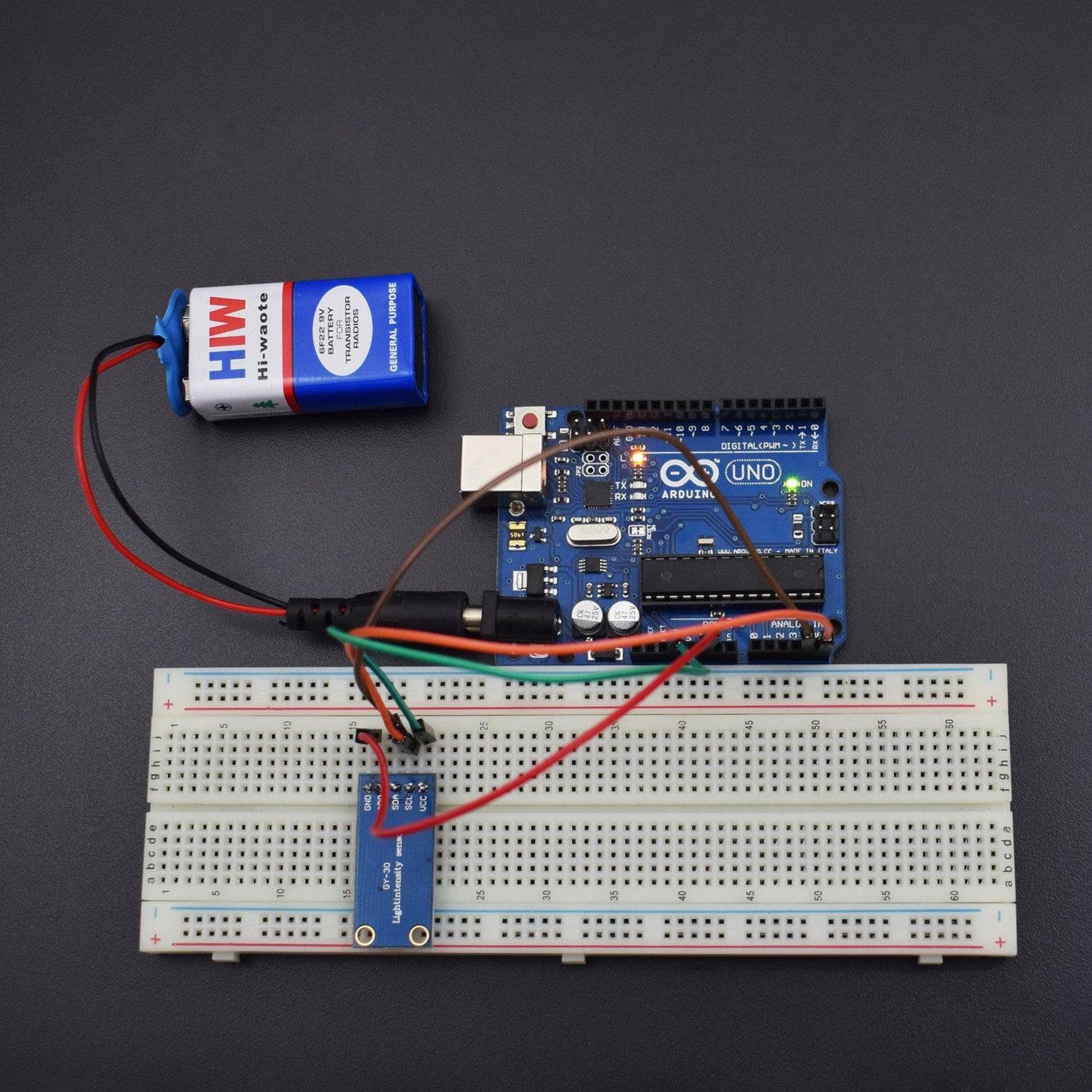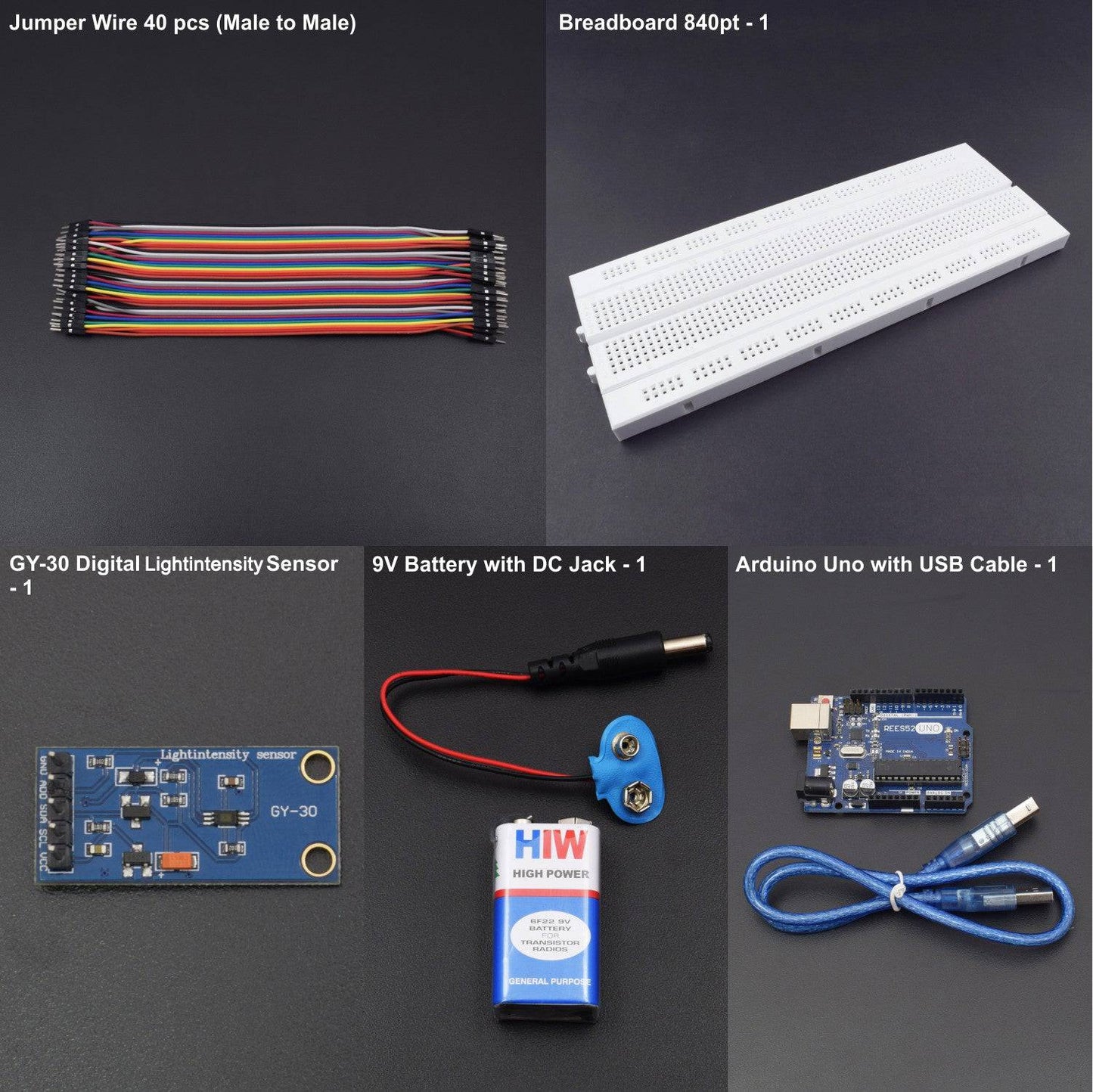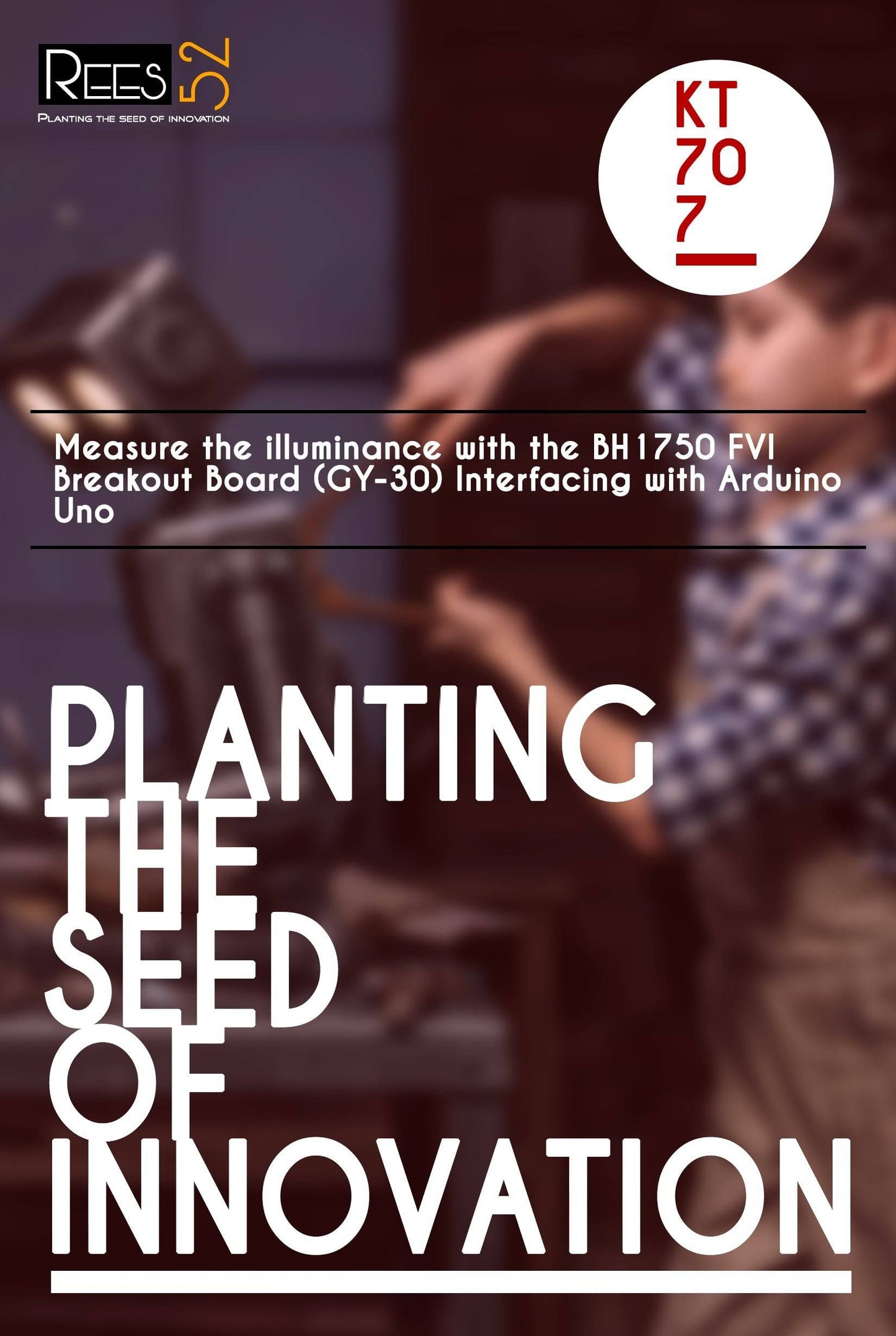


KIT INCLUDED:
- Arduino uno with USB cable- 1
- BH1750 Breakout Board Sensor Module- 1
- Jumper wire (male to male) – 40 pieces
- Breadboard 840 Points - 1
- 9V Battery with DC Jack - 1
HARDWARE REQUIRED
- Arduino Uno with USB cable- 1
- BH1750 Breakout Board Sensor Module- 1
- Jumper wire (male to male) – 40 pieces
- Breadboard 840 Points - 1
- 9V Battery with DC Jack - 1
SOFTWARE REQUIRED
Arduino IDE 1.8.5 (programmable platform for Arduino)
Click To Download:https://www.arduino.cc/en/Main/Software
SPECIFICATIONS
BH1750FVI Breakout Board Sensor Module
- Chip: BH1750FVI
- Power Supply: 3.3V - 5V
- Light Range:0 - 65535 lx(Lux)
- Sensor Built-in: 16-bit AD converter
- Size(L x W): Approx. 3.2cm x 1.5cm
- Direct digital output
- Widely used to 1-lux high precision measurement
- Standard IIC communication
PIN DESCRIPTION
BH1750FVI Breakout Board Sensor Module
Pin |
Name |
Description |
1 |
GND |
Ground (It grounds the Input and completes the circuit path ) |
2 |
VCC |
3.3 V to 5 V (Recommended Voltage) |
3 |
SDA |
Serial Data (Serial Data used for I2C communication) |
4 |
SCL |
Serial Clock (Serial Clock used for I2C serial clock ) |
5 |
ADDR |
Address Pin (It communicates with Sensor via I2C addresses) |
CIRCUIT CONNECTION
- The GND Pin (GY-30) is connected with GND Pin in the Arduino Uno board and VCC (GY-30) is attached to 3.3V to build a circuit which measures illuminance in the particular light source.
- The SDA Pin (GY-30) is attached to Pin A4 and SCL Pin (GY-30) is connected to Pin A5 of the Arduino Uno board to get the data accordingly.
-
The ADDR Pin can connect with 2 devices of BH1750 with different addresses. But it depends on ADDR Pin status.
- If ADDR = LOW, The address will be 0x23
- If ADDR = HIGH, The address will be 0x5C
- But the ADDR Pin is not used in this particular circuit.
- The sensor detects the illuminance from the light source which is being displayed on the output screen (serial monitor).

CODE
Click to see the code here: https://docs.google.com/document/d/e/2PACX-1vSoopDGdz7NHvO2NiTR18o-Y39MSoXixItDdu5-GWORRVggwZIxpn0B8zi1zf9PzmWMOUwr8moh2fsh/pub?embedded=true
Important Note: You need to Install the Libraries for the given Light Sensor (GY-30). Here, are the Steps:
- Search for the Library in Manage Libraries
- Enter the name of the Library (BH1750.h) in the Search Bar.
- Check if the Library is Installed or not.
- If not, then click on Install Button and include the library.
WORKING
After Uploading the code see the output just by opening the Serial Monitor. You can see the value of Luminous flux Value

Block Diagram:
Welcome to this Arduino-based BH1750 Breakout Board Sensor Module which mainly consists of a serial clock Pin (SCL), Serial data pin (SDA), Power Supply (VCC), and Address Pin (ADDR) and a Ground (GND) pin. The input is being transmitted towards the SDA and SCL pin,i.e, A4 and A5 of the Arduino Uno respectively. And the Output is being displayed on the serial monitor.
Its working principle depends upon the reflecting light from a light source and measurement of illuminance is done in terms of lux. Lux is also known as luxens which is responsible for the amount of illuminance in a particular light source. With the BH1750 Light Sensor intensity, you can directly measure the lux. The data which is output by this sensor is directly output in Lux (Lx). When objects are lighted they get the 1 lx luminous flux in one square meter (in general), their light intensity is 1lx. It also has three measurement modes such as:
- H-resolution with the sensitivity of 0.5 lux.
- H-resolution with the sensitivity of 1 lux.
- L-resolution with the sensitivity of 4 lux.





